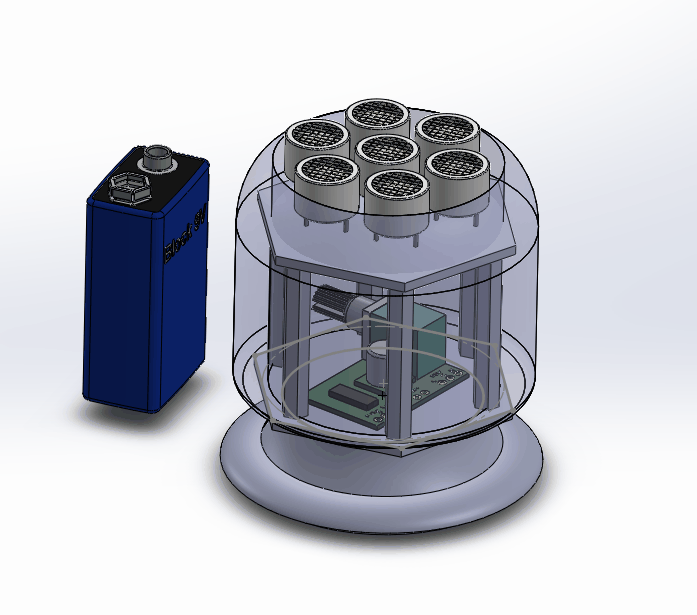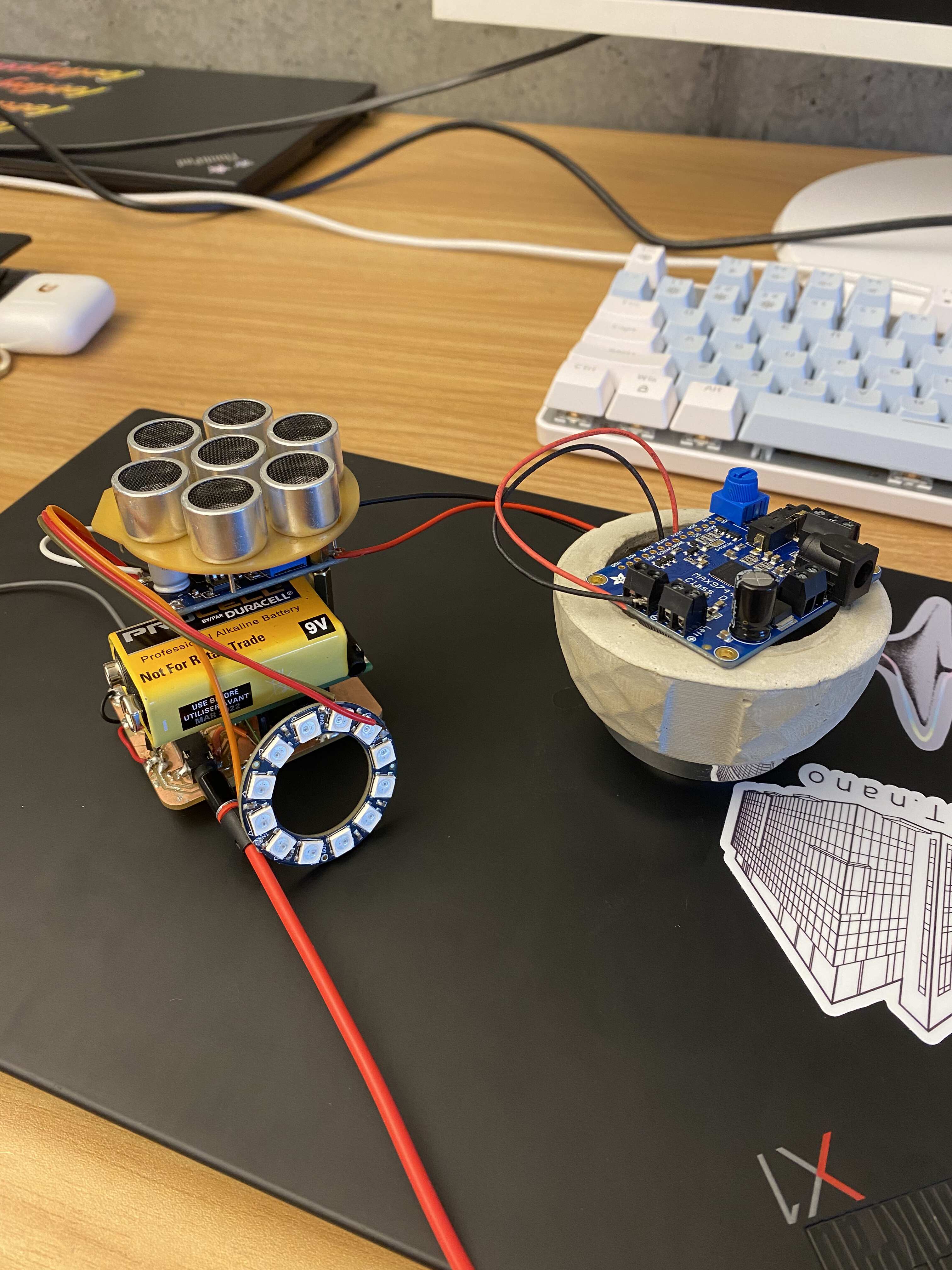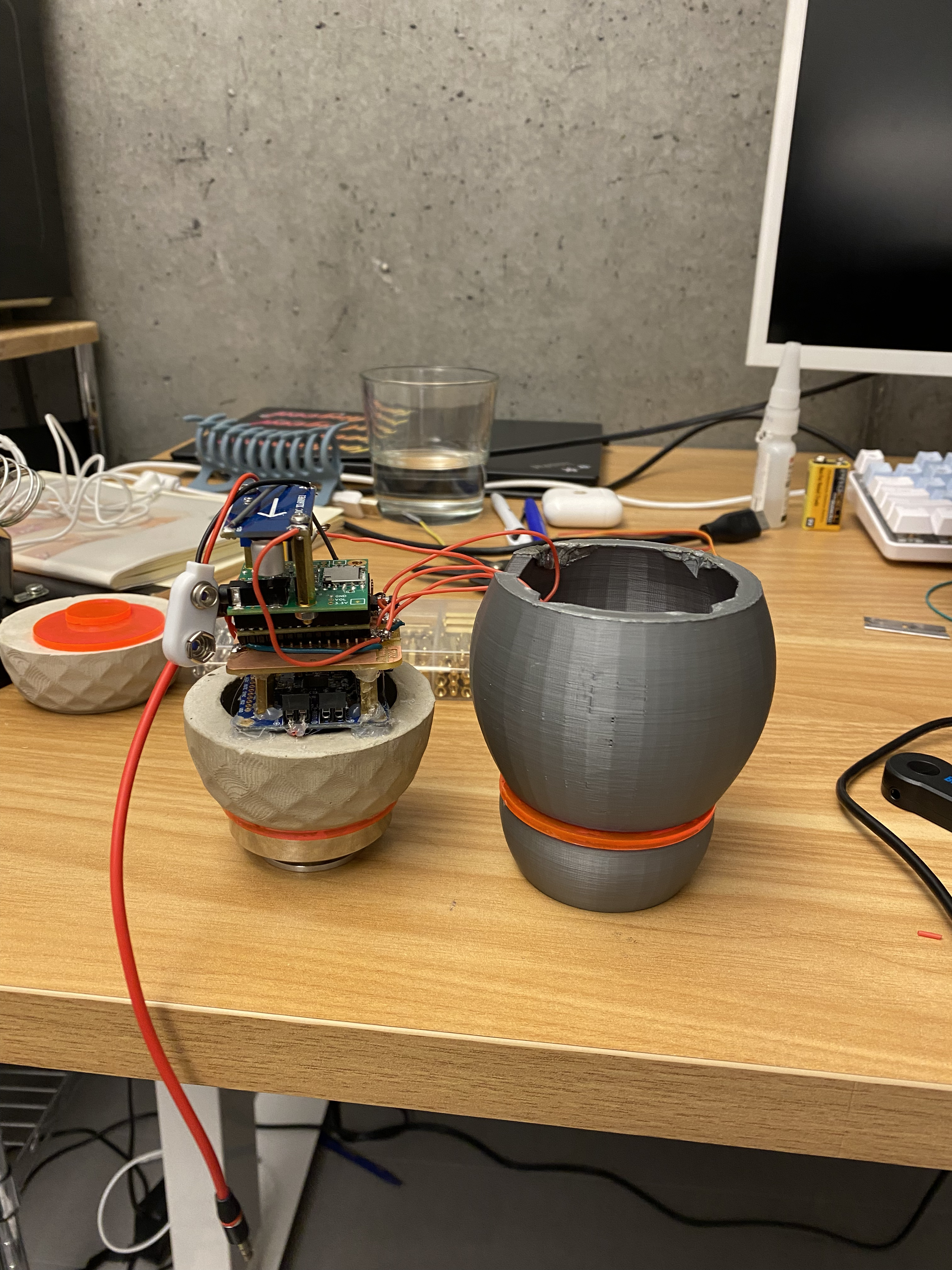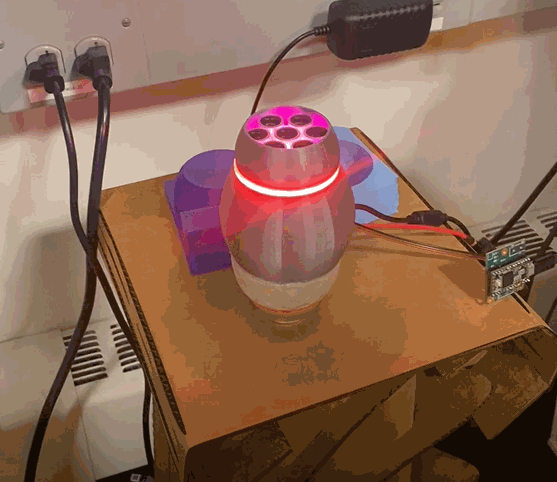Final Project Sketch
Chaos Wubbber:
This device uses a non-periodic oscillating analog circuit to generate waveforms, which are then downsampled and synthesized into bass sounds in the 10-250Hz range. The chaotic double attractor scroll pattern will be displayed on a LED screen as it changes. The sound output will be from a vibrational speaker, which will allow the Chaos Wubbber to be stuck onto any smooth surface and make the surface a diaphram. The goal is to integrate components and housing in such a way that it can be easily transported, charged, and used.
Implementation:
Circuit:
Chua's Circuit is a classic implementation of a chaotic non-periodic oscillator. The circuit can be analyzed with Kirchoff's rules and found to be modeled
by a system of three nonlinear ODEs describing the voltage across several of the circuit elements. When simulated and the three voltages are plotted as XYZ, it produces a chaotic double scroll attractor pattern shown above.
In practice, the circuit topology must include a 'negative resistance' component called a Chua's Diode, which can be implemented with opamps and resistors as shown below. I also found Ian Fritz who makes synthesizers
using chaotic circuits. Will need to find a way to differentiate my project, perhaps using IR sensors to modulate damping, rate, and gain so that the unit is interactive.
Mechanical:
I plan to mount my electronics and power directly on top of a off-the-shelf vibrational speaker part. You've probably seen them before, maybe even in the form of a bone-conduction speaker. The working principle is the same, which is that the acoustic pressure is coupled mechanically into a surface, which becomes the vibrating 'diaphram' from which sound is emitted. This means that the PCB, battery, and screen will need to be secured to the frame of the speaker. Here's a quick sketch that will eventually become a 3D model.
Update 10/27:
- Parts ordered, thinking about adding an ultrasonic parametric speaker array to use other objects as higher-frequency acoustic resonatorsPivot:
A bass speaker that essentially just plays white noise is not that exciting. Because the human ear interprets music rhythmically, there really is no point to a 'chaotic noise generator' The idea of an intrisically non-periodic oscillating circuit is cool but honestly produces absolutely awful sounds. Here's a well-made synth too by Ian Fritz called the Hypster. I decided to pivot to making a music speaker that is capable of generating streaming music through two auditory outputs: a vibrational speaker and a parametric speaker. A parametic speaker is an array of highly directional ultraound transducers that modulate audio with 40kHz. When the pressure waves hit an object, they demodulate into sound. It's essentially the laser equivalent of a speaker. Both speakers are able to make sound output of the objects in a room.
Drawings:

Final Description:
This stero audio device contains two speaker components: a mid and low-end speaker and an ultrasonic tweeter. Both speakers output audio in unique and different ways. The vibrational speaker couples to an object it's sitting on and vibrates it to produce sound. If it's just hanging out in air, it doesn't produce much sound because its only moving the ear around it's steel foot. The ultrasonic speaker simutaneously drives an array of transducers at 40 kHz, which is beyond the auditory range of humans. It modulates the 40kHz signal with audio data and sends it in a very directional beam. The output is a sound laser that can be aimed at different objects, which demodulate the ultrasound and produce and audio signal. The device has a crossover system via the Teensy that allows tuning of either end of the audio output.
Parts: - Speaker base casted in hydrostone - 3D printed mid and upper speaker convert - Custom milled PCBs for power and transducers - Laser cut acrylic for light pipes
Materials:
External:
4 ohm 20W vibraion speaker ($10)
Class D Stereo Amp Shield ($20 or make your own)
MAX 4427 High Speed MOSFET Driver ($3)
Internal:
PLA housing printed with Prusa Mk3s
Machinable Wax (need 3"x3"x1.5") cut with Shopbot Desktop
Laser-Cut acrylic
*Does not include various basic electronics components. See design files for BOM
Previous work:
Others have worked on many cool forms of ultrasonic speaker arrays. Some that I found useful were the following:
- My friend and former coworker Lucy Fauth
- Former media lab dissertation of Joseph Pompei
- this Github repo
There are many commercialized versions of the vibration speaker but I have not come across a system that uses both.
Final:
Here's a collection of videos and images documenting my progress throughout the final week:
Thanks to Zack, I was able to use his old Teensy3.2 and Audio shield that he got at the original conference introducing the library! I prioritized getting the microcontroller to output a modulated 40kHz PWM signal while simutaneously streaming audio to the Class D amplifier. This involved writing some Arduino code to control the LEDs and Teensy's audio library to stream I2S to the audio output using SD card data or audio input. ADC samples audio in and modulates duty cycle of 40kHz pulse. Here's a video of it working with my prototyped components:
Next, I designed the speaker housing. I designed a few models from this channel on youtube and made
a shell for a speaker structure. I got stuck trying to design the rest of the feature and convert the shell into a solid, so I ported it into Fusion instead,
filled the holes, and converted it to a body. I then added my desired features on the interior to hold my components. I was also able to check tool accesibility for milling.
I then milled the rest of my wax block to prepare a hydrostone casting.
I was happy with how it came out, so I used a large metal cylinder for the second casting in order to hollow out the middle to fit the speaker.

Finally, I had to design a new board to house microcontroller, the H-Bridge and associated 20V power electronics. A 9V battery powers both a 9V-20V boost converter and a 5V regulator for LEDs.
The class D amplifier board provides a 12V input that I can hook up to a wall adapter for ease of design. The board also outputs some pins to control a neopixel strip.
I was able to get the new components mode working together well, but the ultrasonic array was highly distorted and did not seem to be modulating PWM duty cycle fast enough.
I had to integrate my components first, so I prioritized the rest of the 3D design and fabrication.

 I 3D printed the speaker housing to fit minimally around my packed components.
I 3D printed the speaker housing to fit minimally around my packed components.

Tragedy struck when I tried to fly too close to the sun. I thought the LEDs off battery power weren't bright enough, so I bodged the 9V connection to take 12V
from the wall regulator. All of the sudden the Teensy started smoking and everything stopped working. I was horrified because it was 3AM on Monday. The regulator was fried on the Teensy and the audio jack on my laptop is dead, but I was still able
to power it via a 3.7V battery and connect with it via a micro-USB cable with a snipped VDD. Everything else stopped working (LEDs, PWM), but it's somehow still streaming audio. I must have somehow shorted 12V to the Teensy voltage input.
Anyways, I'm very sad that I couldn't get a video of everything working and assembled. This is as far as I got: an aseembled speaker with broken ultrasound that can stream music.

Project Files:
Grasshopper cos_folds shell (.3dm)